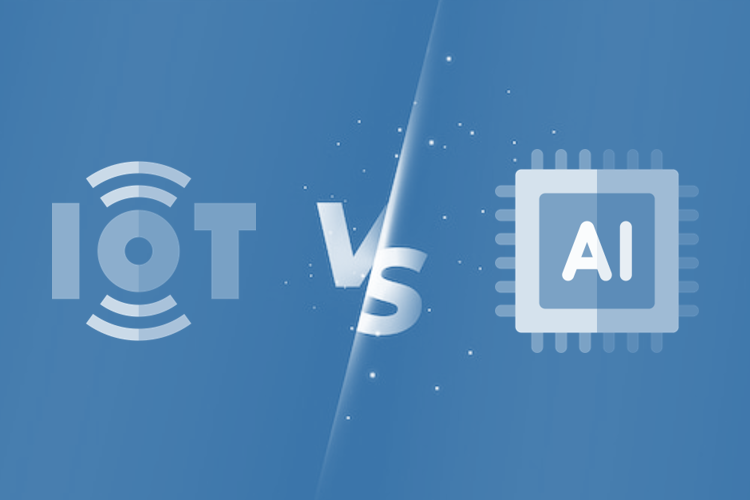React JS offers numerous benefits to developers when it comes to creating dynamic web applications that are both fast and efficient.
Front-end web development has come a long way in the past decade. With the rise of complex, data-driven web applications, front-end engineers need robust frameworks and libraries to build smooth, reactive user interfaces. This is where React JS comes in – the open-source JavaScript library has quickly become one of the most popular choices for front-end development.
But what exactly makes React so appealing to developers?
In this post, we’ll take a deep dive into React to understand what it is, its key features, and most importantly, the myriad benefits it offers for building modern web applications.
Understanding React JS
Let’s first demystify what React JS is all about. Simply put, React is an open-source JavaScript library created by Facebook for building user interfaces. Now you may ask, don’t we already have jQuery, Angular, and other libraries for front-end development? What makes React so special?
React distinguishes itself from these traditional frameworks and libraries in a few fundamental ways:
Declarative Syntax with JSX
React uses a declarative paradigm for rendering data as UI elements, rather than the imperative style seen in jQuery. This means your React code will simply declare what each UI component should look like based on the current data.
This declarative style is enforced through the use of JSX, a syntax extension to JavaScript. JSX allows you to write HTML-like tags directly in React components. This results in code that is easier to understand, maintain and scale. Developers greatly appreciate not having to context switch between HTML, CSS and JavaScript.
Components and Reusability
At the core of React are components – reusable, encapsulated pieces of UI code. You can have components for headers, footers, buttons etc. Components receive data through ‘props’ and render UI by returning JSX templates. This component architecture promotes separation of concerns, reusability and maintability.
Components are like LEGO blocks. You can reuse them throughout your application, pass data into them and compose more complex UIs from basic components. This systematic reusability is a major advantage of React.
The Virtual DOM
Here’s React’s most unique innovation. The Virtual DOM is an in-memory data structure React uses to keep track of UI changes and sync with the real DOM effectively.
When data changes, React generates a new Virtual DOM. It then compares this with the previous Virtual DOM to identify the least number of changes needed to update the real DOM.
This diffing algorithm leads to minimal DOM manipulation. As a result, React can re-render UI extremely fast after data changes. No more clumsy DOM manipulation – the Virtual DOM eliminates optimization concerns.
These fundamental aspects make React a powerful library for building smooth, dynamic user interfaces. The Virtual DOM in particular can provide major performance benefits compared to traditional JavaScript libraries.
Now that we have some background on React, let’s explore the specific benefits of using React JS for front-end development.
7 Key Benefits of React JS
React offers numerous benefits compared with other frameworks including faster rendering speeds, improved scalability & flexibility and better maintenance capabilities. Here are some key benefits that make React a great choice when it comes to developing modern web applications.
1. Improved Performance
As mentioned earlier, React uses the Virtual DOM to minimize DOM operations and optimize performance. Let’s expand on some of the performance benefits:
- Faster Rendering: The Virtual DOM renders UI components up to 10x faster than standard JavaScript frameworks. The diffing algorithm only makes necessary DOM updates after data changes. Consequently, even complex UIs re-render efficiently with minimal DOM manipulation.
- Better User Experience: The performant re-rendering enabled by the Virtual DOM translates to smooth, lag-free UI interactions. Users perceive the app as more responsive. React’s ability to update specific DOM elements preserves UI state, avoiding frustrating full page reloads.
- Optimized Data Changes: React implements one-way data binding – data only flows in one direction downwards from parent to children. This uni-directional flow combined with immutable data structures greatly simplifies state management. Rendering only updates when underlying data really changes, preventing unnecessary re-renders.
React’s laser focus on optimal rendering through the Virtual DOM pays huge dividends for complex data-driven apps. Users benefit from speedy, seamless interactions.
2. Reusable Components
We touched upon React’s component model earlier. The component architecture promotes building UIs through composition rather than inheritance. Let’s revisit some notable benefits:
- Encapsulation: Components encapsulate UI code into self-contained, independent units. This encapsulation isolates component logic and implementation details from the rest of the app.
- Modularity: Components explicitly define UI elements and functionality. This modularity allows developers to build complex apps through well-integrated components communicating via props.
- Reusability: Components become building blocks for UIs. Developers can reuse components across apps, extending capabilities as needed. This boosts productivity.
- Maintainability: Self-contained components localize complexity. Developers can easily substitute improved implementations of components without affecting app-wide logic.
- Separation of Concerns: Components cleanly separate UI structure, styling, and behavior. This separation simplifies development and testing.
React components unlock rapid, modular front-end development. Building apps through composition over inheritance is the key benefit. Reusability of components also leads to cleaner code and efficient team collaboration.
3. Efficient Development with JSX
React uses JSX, an XML-like syntax for its components. Developers can leverage the expressiveness of JSX to efficiently write React UI code. Some notable benefits:
- Intuitive Syntax: JSX provides a concise, familiar syntax resembling HTML. Developers gain a productive templating language without learning an entirely new DSL.
- Code Readability: JSX is visually clearer and more declarative than heavy JavaScript markup. Template logic remains straightforward to understand.
- Developer Experience: JSX ensures a tighter feedback loop between code and UI effect. Developers immediately visualize results when making changes.
- Better Tooling: The static syntax of JSX allows for helpful IDE features like autocompletion. There are also tools for type-checking and linting JSX code.
JSX is not mandatory for React. However, it streamlines React development with a template language tailored for describing UIs. The declarative nature also aids visualization of component rendering.
4. Unidirectional Data Flow
React follows one-way data binding – parent components pass data into children via props, not the other way round. This top-down flow of data combined with immutable data structures results in:
- Predictability: Data only flows in one direction, making it straightforward to trace data flow in React apps. Developers writing components can safely assume props will not mutate unexpectedly from external factors.
- Maintainability: The unidirectional flow contains complexity by preventing cascading updates across the app. Component logic stays self-contained.
- Testability: The controlled data flow and component isolation enables effective unit testing. Developers can test components by simply providing props and testing the output.
While two-way data binding can accelerate development at first, the unpredictability and cascading updates make medium-to-large apps difficult to optimize and debug. React’s unidirectional data flow solves this down the line.
5. Large and Active Community
As one of the most popular JavaScript libraries, React benefits from a massive community of developers and users. Some perks of this thriving ecosystem are:
- Helpful Community: Active forums, documentation and guides allow developers to find solutions to React challenges. Experts are eager to help newcomers.
- Third-Party Components: Open source React components provide readymade UI elements like autocompletes, grids etc. This accelerates development.
- Tooling and Integration: React has wide tooling support – build tools, routing, form libraries, editors etc. It also integrates well with frameworks like Angular and libraries like D3.js.
- Talent Pool: The abundant React talent pool makes hiring React developers easier. Developers can also upskill through the wealth of learning resources.
- Regular Updates: Facebook and community contributors frequently improve React with new capabilities, performance updates and bug fixes.
An engaged community and ecosystem keeps pushing React forward. Developers can leverage community wisdom to build apps faster and skill up.
6. Strong Ecosystem
Let’s do a quick rundown of the rich React ecosystem that augments its capabilities:
- React Router: The standard routing library for navigation in React single-page apps. React Router provides declarative routing comparable to frameworks like Angular.
- Redux: The most popular state management library. Redux provides predictable state management outside React components.
- React Native: Build native iOS and Android apps using React! React Native compiles to native app UI elements while reusing React conventions.
- GraphQL: The modern API query language developed by Facebook works excellently with React. Co-evolving with React, GraphQL is the ideal data-fetching solution.
- Material UI/Reactstrap: React component libraries with prebuilt UI elements. Jumpstart app styling leveraging these polished components.
- Next.js: Production-grade React framework that adds SSR(server-side rendering), routing and other features for production apps.
React’s ecosystem has grown tremendously over the years. Complementary tools expand on React’s capabilities for a full-fledged development experience.
7. SEO-Friendly Applications
Single page apps(SPAs) built with JavaScript frameworks initially suffered from poor SEO. Google’s web crawlers could not index their content properly. React now offers features that solve this problem:
- Server-side Rendering: Next.js and other libraries allow prerendering React pages on the server for crawlers to index. No more blank pages!
- Component Metadata: Features like React Helmet allow injecting SEO tags into React component markup dynamically.
- Static Site Generation: Tools like GatsbyJS produce pre-rendered static sites from React apps at build time. The pre-generated pages are easily indexed.
- Accessibility: React provides tools to make apps meet accessibility standards through features like ARIA roles and semantic markup.
React-based sites can match server-rendered apps in SEO performance. Solutions like SSR and static site generation resolve indexing issues for SPAs.
Real World React Apps Examples
Prominent sites and web apps leveraging React demonstrate its effectiveness for complex frontends:
- Facebook: The original creators, Facebook uses React extensively in their web and mobile apps. React powers Facebook’s News Feed, Ads Manager, Analytics dashboards among others.
- Instagram: Facebook’s popular photo-sharing app features a React-powered UI. React enables smooth interactions like double-tap to like photos across web and mobile.
- Netflix: A significant portion of Netflix’s site UI including search and navigation is built with React. React provides the dynamic performance needed even with frequent updates to Netflix’s content library.
- The New York Times: The Times migrated their website to React for a faster UI. React improved both reader responsiveness and development efficiency for the newsroom’s journalists.
- Dropbox: Dropbox adopted React for central aspects of their web app like sharing and preview. React’s encapsulation enabled different teams to work efficiently on isolated components.
These apps demonstrate React’s versatility across diverse use cases. Whether it’s UI interactivity, frequency of updates or team collaboration – React delivers tangible benefits.
Challenges and Solutions
Of course, as with any technology, React comes with its own set of challenges developers need to address:
Learning Curve
React’s JSX, one-way data flow, and functional components impose a learning curve for developers accustomed to traditional imperative frameworks.
Solutions:
- Start with small, manageable components to grasp React principles.
- Refer React’s excellent official docs and community resources.
- Try a React code course to interactively build apps end-to-end.
Integration Complexity
Integrating React with existing systems can be tricky due to its peculiar architectural conventions.
Solutions:
- Use Next.js if integrating React into an existing server-rendered app.
- EmployRedux to manage state in larger React apps instead of reactive patterns.
- Carefully plan data flow at the intersection of React and non-React code.
Dependence on Other Libraries
React only handles the view layer. For routing, form management etc., you need integration with other libraries.
Solutions:
- Accept that you’ll have to learn new libraries like React Router. This is inevitable for any framework.
- Stick to widely-adopted solutions like Redux to avoid unmaintained libraries.
- Leverage boilerplates and starters with integrated tooling.
While React may require deviating from tried-and-tested stacks, its ecosystem provides robust options for common use cases.
Conclusion
We’ve explored React in-depth – how it differs from traditional web development frameworks, key features like the Virtual DOM, JSX, and components, as well as the manifold benefits React offers for front-end apps.
Here’s a quick recap of the benefits of React JS:
- Blazing fast UI updates through the Virtual DOM
- Maintainable, reusable UI components
- Declarative JSX syntax for intuitive coding
- Unidirectional data flow for reduced bugs
- Vibrant community and ecosystem
- Expanding support for SEO
React’s meteoric rise bears testament to its developer appeal and applicability for complex, interactive UIs. The component model, Virtual DOM, and focus on developer experience give React frontrunner status among modern front-end frameworks. React has also shaped front-end app architecture by popularizing patterns like functional components and unidirectional data flow.
Already powering apps across Facebook, Netflix, Dropbox and more, React seems poised for continued dominance. There has never been a better time to become fluent in React by building some projects using this transformational library. You now have the required primer on React under your belt – leverage it to start crafting lightning fast, modular frontends!














